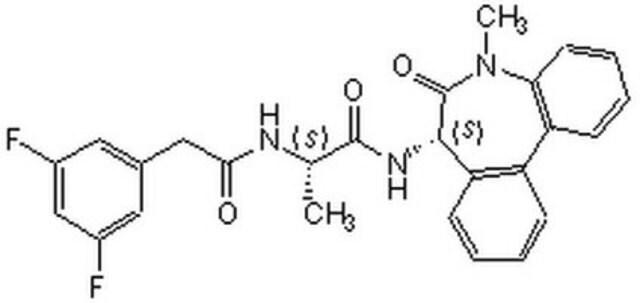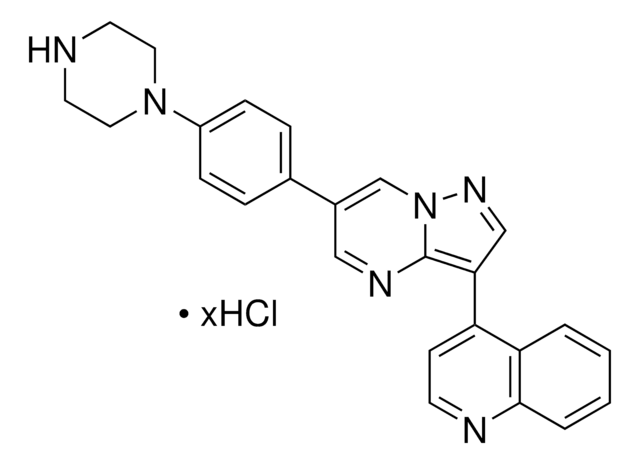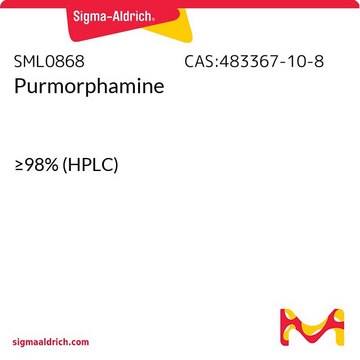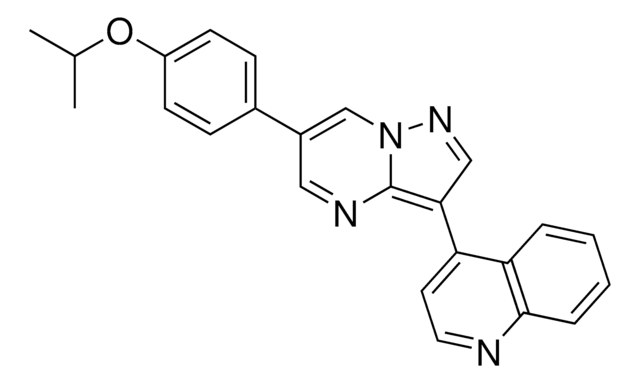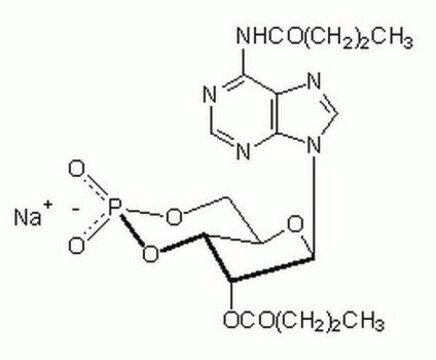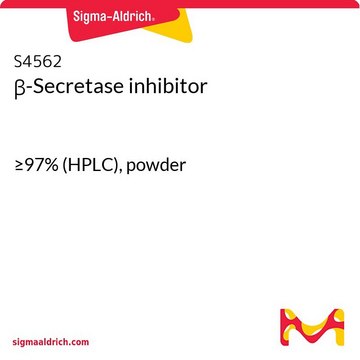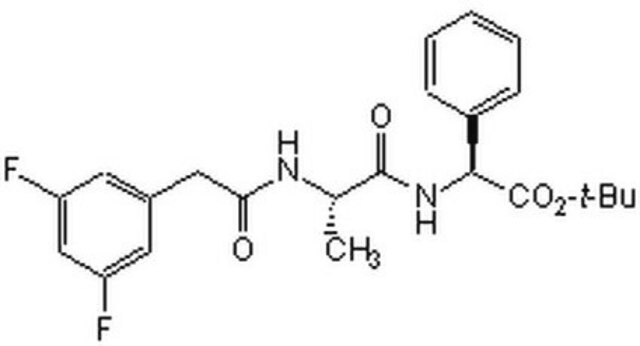565790
Compound E
≥95% (HPLC), solid, γ-secretase inhibitor, Calbiochem®
Synonyme(s) :
γ-Secretase Inhibitor XXI, Compound E, (S,S)- 2-[2-(3,5-Difluorophenyl)-acetylamino]-N-(1-methyl-2-oxo-5-phenyl-2,3-dihydro-1H-benzo[e][1,4]diazepin-3-yl)-propionamide, Compound E
About This Item
Produits recommandés
product name
γ-Secretase Inhibitor XXI, Compound E, This g-secretase inhibitor, CAS 209986-17-4, is a cell-permeable, potent, selective, non-transition-state analog inhibitor of γ-secretase and Notch processing. Lowers Aβ levels in APP transgenic mice
Pureté
≥95% (HPLC)
Forme
solid
Fabricant/nom de marque
Calbiochem®
Conditions de stockage
OK to freeze
protect from light
Couleur
white
Solubilité
DMSO: 10 mg/mL
Conditions d'expédition
ambient
Température de stockage
2-8°C
InChI
1S/C27H24F2N4O3/c1-16(30-23(34)14-17-12-19(28)15-20(29)13-17)26(35)32-25-27(36)33(2)22-11-7-6-10-21(22)24(31-25)18-8-4-3-5-9-18/h3-13,15-16,25H,14H2,1-2H3,(H,30,34)(H,32,35)/t16-,25?/m0/s1
Clé InChI
JNGZXGGOCLZBFB-YPHZTSLFSA-N
Description générale
Actions biochimiques/physiologiques
γ-secretase and Notch processing Ab40 in CHO cells overexpressing wild type bAPP
Conditionnement
Avertissement
Reconstitution
Autres remarques
Jung, K.M., et al. 2003. J. Biol. Chem.278, 42161.
Murakami, D., et al. 2003. Oncogene22, 1511.
Campbell, W.A., et al. 2003. J. Neurochem.85, 1563.
Berechid, B.E., et al., 2002. J. Biol. Chem.277, 8154.
Lee, H.J., et al. 2002. J. Biol. Chem.277, 6318.
May, P., et al. 2002. J. Biol. Chem.277, 18736.
Scheinfeld, M.H., et al. 2002. J. Biol. Chem.277, 44195.
Ni, C. Y., et al. 2001. Science294, 2179.
Beher, D., et al. 2001. J. Biol. Chem.276, 45394.
Doerfler, P., et al. 2001. Proc. Natl. Acad. Sci. USA98, 9312.
Seiffert, D., et al. 2000. J. Biol. Chem.275, 34086.
Informations légales
Code de la classe de stockage
11 - Combustible Solids
Classe de danger pour l'eau (WGK)
WGK 3
Point d'éclair (°F)
Not applicable
Point d'éclair (°C)
Not applicable
Certificats d'analyse (COA)
Recherchez un Certificats d'analyse (COA) en saisissant le numéro de lot du produit. Les numéros de lot figurent sur l'étiquette du produit après les mots "Lot" ou "Batch".
Déjà en possession de ce produit ?
Retrouvez la documentation relative aux produits que vous avez récemment achetés dans la Bibliothèque de documents.
Les clients ont également consulté
Notre équipe de scientifiques dispose d'une expérience dans tous les secteurs de la recherche, notamment en sciences de la vie, science des matériaux, synthèse chimique, chromatographie, analyse et dans de nombreux autres domaines..
Contacter notre Service technique